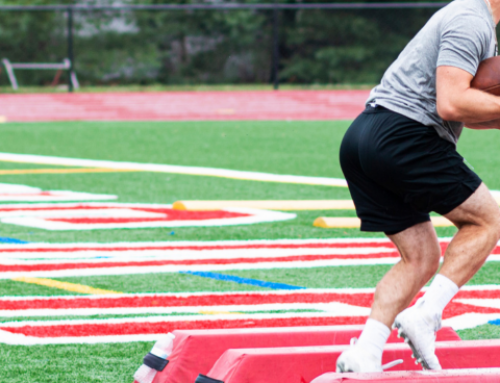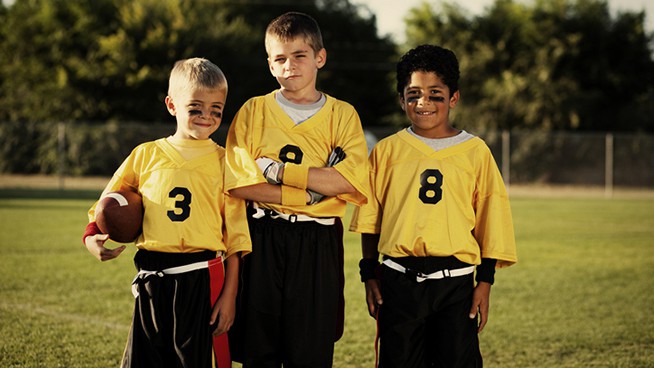Do Altitude Training Masks Actually Work?
![]()
Athletes are always looking for an edge, something that will give them a tactical advantage on the field. Unfortunately, the old adage “a sucker is born every minute” comes to mind. Companies pay athletes big bucks to endorse and use their products in front of cameras and come up with slogans using pseudo-science and snazzy catch phrases designed to separate you from your cash. Snake-oil salesmen have been using these methods for hundreds of years (and shoe companies still use them to this day).
One newcomer to the sports-performance market is the “altitude training mask” and its variants. Most of them feature a slogan stating the mask “mimics the effect of training at high altitude.” Unfortunately for individuals who spend $70-80 on one of these training masks, this in and of itself in not true.
RELATED: Understanding the Benefits and Risks of Altitude Training
High altitude affects people due to its lower atmospheric (barometric) pressure. The air is still made up of ~21% oxygen, but it’s harder to breathe because it doesn’t “weigh” as much. Basically, the closer you get to outer space, the less pull gravity has on you and the things around you. So unless a mask can mimic anti-gravity, that slogan is false.
Bodies adapt to high altitude on a hormonal level, and the changes take weeks or months of 24/7 exposure to occur. These adaptations include an increase in erythropoietin (commonly called EPO and once widely abused by athletes in sports like cycling, which require a great aerobic capacity).
EPO stimulates the production of red blood cells, which carry oxygen to the muscles. To an extent, the more red blood cells you have, the more oxygen can be delivered to your muscles. A number of other physiological changes that boost athletic performance can occur during prolonged (there’s that word again) exposure to high altitude. These include an increase in the number of microscopic blood vessels, mitochondria, and an increase in the body’s’ ability to tolerate and/or buffer lactic acid (known as the lactate paradox).
RELATED: Performance Benefits of High-Altitude Training
What does the research say? The newest study used military ROTC cadets as subjects, a population that is typically required to have a high level of aerobic endurance. Again, unfortunately for those who spent their hard earned money, the results were not positive. You can read the study abstract below.
One study found that wearing a mask did not cause superior conditioning results compared to the subjects who did not wear a mask. A second study found, “The training mask caused inadequate hyperventilation that led to arterial hypoxemia and psychological discomfort, but the magnitude of these responses were small and they did not vary across mask configurations.”
But wait! There it is, arterial hypoxemia! A fancy term meaning less oxygen is circulating in the blood. Well, that should be common sense: physically restricting the ability to breathe has that effect. The good thing is when you take the mask off, oxygen levels normalize rather quickly. This is why you need 24/7 exposure to high altitude for the adaptations mentioned earlier to take place.
What should stand out from the study to training mask users—especially those who play speed/power sports like football, baseball and basketball—is the note regarding RPE (rate of perceived exertion) and increased levels of anxiety. What those mean is that your mind and body go into “freakout” mode when you can’t breathe effectively. Although some may use the higher RPE numbers as a rallying cry for improving “mental toughness,” I am more concerned with impaired workout quality. Instead of being able to effectively train for speed, strength, power or hypertrophy, your mind and body are too busy going into panic mode. This can potentially have the dual effect of: (1) causing you to cut your workout short and/or lessen its intensity (thereby lessening improvements that would normally occur via super compensation; and (2) causing a premature rise in cortisol levels. (Cortisol is a stress hormone that has been linked to stimulating abdominal fat gain, lowered immune-system function and a decline in cognitive abilities such as problem-solving, focus and reasoning.)
Training masks have their supporters, such as CrossFit endurance coach Brian McKenzie—with whom I agree on using HIIT methods with endurance athletes. But the apparent realization that he receives a paycheck from the company in question causes me to take his proclamations on training masks with a grain of salt. I am much more apt to listen to coaches such as fellow STACK contributor Tony Gentilcore, along with Dan Hechler and James Darley, who wrote an interesting piece regarding possible muscular dysfunction that could be caused by repeated use of training masks. You can read their article here.

RECOMMENDED FOR YOU
MOST POPULAR
Do Altitude Training Masks Actually Work?
![]()
Athletes are always looking for an edge, something that will give them a tactical advantage on the field. Unfortunately, the old adage “a sucker is born every minute” comes to mind. Companies pay athletes big bucks to endorse and use their products in front of cameras and come up with slogans using pseudo-science and snazzy catch phrases designed to separate you from your cash. Snake-oil salesmen have been using these methods for hundreds of years (and shoe companies still use them to this day).
One newcomer to the sports-performance market is the “altitude training mask” and its variants. Most of them feature a slogan stating the mask “mimics the effect of training at high altitude.” Unfortunately for individuals who spend $70-80 on one of these training masks, this in and of itself in not true.
RELATED: Understanding the Benefits and Risks of Altitude Training
High altitude affects people due to its lower atmospheric (barometric) pressure. The air is still made up of ~21% oxygen, but it’s harder to breathe because it doesn’t “weigh” as much. Basically, the closer you get to outer space, the less pull gravity has on you and the things around you. So unless a mask can mimic anti-gravity, that slogan is false.
Bodies adapt to high altitude on a hormonal level, and the changes take weeks or months of 24/7 exposure to occur. These adaptations include an increase in erythropoietin (commonly called EPO and once widely abused by athletes in sports like cycling, which require a great aerobic capacity).
EPO stimulates the production of red blood cells, which carry oxygen to the muscles. To an extent, the more red blood cells you have, the more oxygen can be delivered to your muscles. A number of other physiological changes that boost athletic performance can occur during prolonged (there’s that word again) exposure to high altitude. These include an increase in the number of microscopic blood vessels, mitochondria, and an increase in the body’s’ ability to tolerate and/or buffer lactic acid (known as the lactate paradox).
RELATED: Performance Benefits of High-Altitude Training
What does the research say? The newest study used military ROTC cadets as subjects, a population that is typically required to have a high level of aerobic endurance. Again, unfortunately for those who spent their hard earned money, the results were not positive. You can read the study abstract below.
One study found that wearing a mask did not cause superior conditioning results compared to the subjects who did not wear a mask. A second study found, “The training mask caused inadequate hyperventilation that led to arterial hypoxemia and psychological discomfort, but the magnitude of these responses were small and they did not vary across mask configurations.”
But wait! There it is, arterial hypoxemia! A fancy term meaning less oxygen is circulating in the blood. Well, that should be common sense: physically restricting the ability to breathe has that effect. The good thing is when you take the mask off, oxygen levels normalize rather quickly. This is why you need 24/7 exposure to high altitude for the adaptations mentioned earlier to take place.
What should stand out from the study to training mask users—especially those who play speed/power sports like football, baseball and basketball—is the note regarding RPE (rate of perceived exertion) and increased levels of anxiety. What those mean is that your mind and body go into “freakout” mode when you can’t breathe effectively. Although some may use the higher RPE numbers as a rallying cry for improving “mental toughness,” I am more concerned with impaired workout quality. Instead of being able to effectively train for speed, strength, power or hypertrophy, your mind and body are too busy going into panic mode. This can potentially have the dual effect of: (1) causing you to cut your workout short and/or lessen its intensity (thereby lessening improvements that would normally occur via super compensation; and (2) causing a premature rise in cortisol levels. (Cortisol is a stress hormone that has been linked to stimulating abdominal fat gain, lowered immune-system function and a decline in cognitive abilities such as problem-solving, focus and reasoning.)
Training masks have their supporters, such as CrossFit endurance coach Brian McKenzie—with whom I agree on using HIIT methods with endurance athletes. But the apparent realization that he receives a paycheck from the company in question causes me to take his proclamations on training masks with a grain of salt. I am much more apt to listen to coaches such as fellow STACK contributor Tony Gentilcore, along with Dan Hechler and James Darley, who wrote an interesting piece regarding possible muscular dysfunction that could be caused by repeated use of training masks. You can read their article here.











